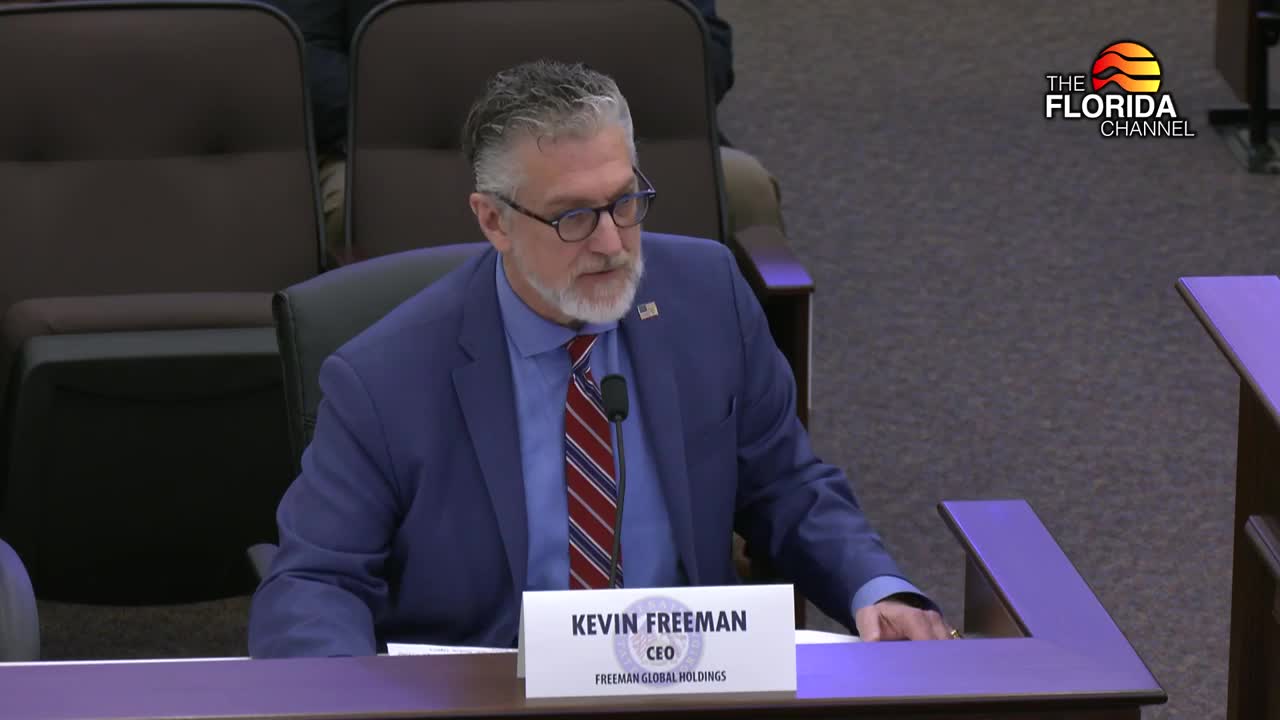Florida officials discuss legalizing gold and silver as everyday currency
March 25, 2025 | Banking and Insurance, Standing Committees, Senate, Legislative, Florida
This article was created by AI summarizing key points discussed. AI makes mistakes, so for full details and context, please refer to the video of the full meeting. Please report any errors so we can fix them. Report an error »

In a recent meeting of the Florida Legislature's Committee on Banking and Insurance, discussions centered around the potential for gold and silver to be recognized as legal tender in the state. This topic has gained traction in various states, including Texas and Utah, where similar initiatives have been proposed and supported by significant public interest.
The meeting featured testimony from experts who emphasized the historical significance of gold and silver as forms of money, tracing their use back to biblical times and highlighting their constitutional backing. One speaker noted that since the U.S. abandoned the gold standard in 1971, the dollar has lost 90% of its value, making precious metals an attractive alternative for preserving wealth, especially during economic downturns.
A notable point raised was the success of Texas's Proposition 7, where 76% of voters supported making gold and silver usable for everyday transactions. This precedent suggests a growing public appetite for similar measures in Florida. Advocates argue that implementing a system for gold and silver transactions could benefit citizens, particularly those with lower incomes, by providing a stable form of currency.
However, the discussion also revealed concerns from regulatory officials regarding the practicalities of such a system. The Office of Financial Regulation expressed the need for a clear framework that would allow for safe and efficient transactions involving precious metals. They highlighted the importance of not embedding specific systems into legislation, advocating instead for a flexible approach that could adapt to future developments.
As the committee continues to explore this issue, the potential for gold and silver to play a role in Florida's economy remains a topic of significant interest. The next steps will involve further discussions to reach a consensus on the terminology and framework necessary for moving forward with legislation. The outcome of these deliberations could have lasting implications for Florida's financial landscape and its residents' economic well-being.
The meeting featured testimony from experts who emphasized the historical significance of gold and silver as forms of money, tracing their use back to biblical times and highlighting their constitutional backing. One speaker noted that since the U.S. abandoned the gold standard in 1971, the dollar has lost 90% of its value, making precious metals an attractive alternative for preserving wealth, especially during economic downturns.
A notable point raised was the success of Texas's Proposition 7, where 76% of voters supported making gold and silver usable for everyday transactions. This precedent suggests a growing public appetite for similar measures in Florida. Advocates argue that implementing a system for gold and silver transactions could benefit citizens, particularly those with lower incomes, by providing a stable form of currency.
However, the discussion also revealed concerns from regulatory officials regarding the practicalities of such a system. The Office of Financial Regulation expressed the need for a clear framework that would allow for safe and efficient transactions involving precious metals. They highlighted the importance of not embedding specific systems into legislation, advocating instead for a flexible approach that could adapt to future developments.
As the committee continues to explore this issue, the potential for gold and silver to play a role in Florida's economy remains a topic of significant interest. The next steps will involve further discussions to reach a consensus on the terminology and framework necessary for moving forward with legislation. The outcome of these deliberations could have lasting implications for Florida's financial landscape and its residents' economic well-being.
View full meeting
This article is based on a recent meeting—watch the full video and explore the complete transcript for deeper insights into the discussion.
View full meeting